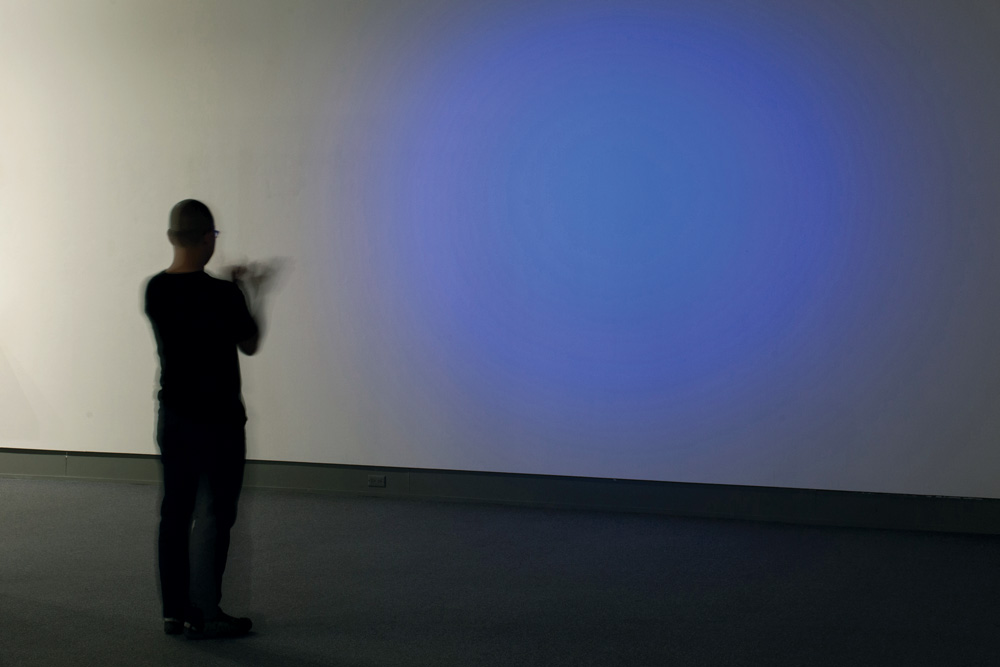The first element encountered in the exhibition “5 over 4” was an anonymous wall text styled in a plain black typeface. Beneath the title, artists and dates was a five-line statement, each line a taut, precise and necessary single sentence. Lines three and four read: “The exhibition title refers to a polyrhythmic pattern where several lines of rhythms syncopate to introduce complexity and irregularity to a beat. Here, lines in various sensorial and conceptual registers will run in parallel and also at times intersect.” Did this refer to musical principles, the artworks beyond or the essence and structure of the exhibition? All at once, it turns out.
Put another way, “5 over 4” (or “5/4” as it would appear on sheet music) is a time signature. Once designated, it governs the regularity of the composition, bar by bar, within which elaborations and variations occur. Five artists—Marla Hlady, Eleanor King, Duncan MacDonald, Christof Migone and Ursula Nistrup—were connected by practices involving sound (including silence), musical motifs (including composition and transposition) and spectator interaction and participation. They naturally grouped together.
Migone contributed three illuminated neon sculptures, each titled 4 feet and 33 inches (2014), with sub-designations with respect to their configurations: (lines), (circles) and (ring). They punningly refer to John Cage’s 4’33”, the landmark silent composition that articulates absence. The timed light sequences in Migone’s sculptures correspond to durations of the three movements of Cage’s piece.
Nistrup’s Paper Thin Walls (2014) is an allée of blank, suspended, handmade papers, delicate and random in their surfaces, leading to a turntable, upon which an LP suggestively plays silence against brief interruptions of spoken-word lyrics by Leonard Cohen.
Hlady’s A Case for Sound: Nina (2010) is a table upon which seven music-box devices sit. When sat upright, each emits a different snippet from Nina Simone’s 1976 Live at Montreux concert recording. It contained the only latent recorded audio in “5 over 4,” possibly undiscovered if one looked but did not touch.
King had a pair of large coloured-pencil drawings on paper. Worm Holes (2013–14) inscribes twin trails of circular, spectral increments, one tracing successive circumferences of a CD and, the other, a vinyl record.
MacDonald had three very distinct works: Chromaphone (2012), a video that, when triggered by noise levels in the gallery, silently projects diffuse and subtle shades of colour onto the wall; Rigolo (2014), an instructional score, whereupon a visitor can choose to perform a set of directions timed by an accompanying stopwatch; and F-Holes (2014), where the scroll-shaped sound holes of a string instrument were cut large into the gallery wall, turning the partition itself into an “instrument.”
Every visitor found a personally determined path through “5 over 4.” The works were met in an array of orders, repetitions and durations. An invisible conductor mediated between artist and audience. She also helped to author the text. Iga Janik, curator at Cambridge Galleries, deserves applause for this deft and innovative concert—ahem, exhibition.
This is a review from the Fall 2014 issue of Canadian Art. To read more from this issue, visit its table of contents.

 Duncan Macdonald, Chromaphone, 2012. Projector, electronics and diffuser, 2.13 x 3.65 m. Photo: Scott Lee.
Duncan Macdonald, Chromaphone, 2012. Projector, electronics and diffuser, 2.13 x 3.65 m. Photo: Scott Lee.







